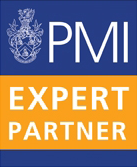ESOG and ORA: Proportionality
8th November, 2021
-
In this fifth blog in our series, we look at applying ‘proportionality’. Links to the previous blogs in this series are here:
- ESOG and ORA: The new architecture for pension scheme governance
- ESOG: outsourcing activities, remuneration policies, proportionality and the ORA
- Effective System of Governance (ESoG): Where do we start?
- Effective System of Governance (ESOG): governance framework and internal controls
We have touched on proportionality in previous blogs in this series. But, as this is quite an important aspect, we think it deserves a blog of its own. Statutory Instrument SI 2018/1103 – The Occupational Pension Schemes (Governance) (Amendment) Regulations 2018 – states that the system of governance must be proportionate to the size, nature, scale and complexity of the activities of the occupational pension scheme. Trustees will, therefore, need to record why they consider their approach across their governance spectrum to be effective and proportionate.
The Pensions Regulator has stated that trustees “need to use their own judgment as to what is a reasonable and proportionate method of ensuring compliance for their scheme”. However, applying proportionality, and recording the rationale for doing so, can be extremely difficult if trustees only have the experience of serving on one trustee board. Advisers can assist, but trustees also need to have the knowledge and understanding to challenge the advice they receive.
Proportionality is going to be a key factor for non-professional trustees, including ensuring that advice is only obtained where needed, to help control costs. Obtaining focussed advice, and controlling the scheme’s operational costs, actually helps demonstrate an Effective System of Governance (ESoG).
The core process
Before considering some of the more challenging aspects, the good news is that trustees will already have a reasonable amount of evidence supporting an ESoG. The core trustee annual process is typically:
- Advisers provide trustees with advice on what they should be doing and why.
- The trustees then use their Trustee Knowledge and Understanding (TKU) to appropriately challenge and focus the advice where required, thus controlling costs.
- The trustees then set their Annual Business Plan and Budget, to record what they are going to do and the budget to support that activity.
- The subsequent meetings, minutes and matters arising then record the actions that the trustees are undertaking, in accordance with the Business Plan.
- At the end of the year, the trustees then explain what they have done in the Report section of the Scheme Accounts.
- Budget monitoring and reporting throughout the year helps to control costs and avoid scope creep.
So, with this simple process that trustees should already have in place, appropriate advice is obtained, challenged and validated with the effective TKU. The activities are then planned for, with a supporting budget and everything is recorded in the Report and Accounts at the end of the year as having been done. All with appropriate and proportionate supporting evidence.
This traditional ‘plan, do and evidence’ processes that trustees have been using for many years is actually a great start to an ESoG and pragmatically applies proportionality.
Dialled in to proportionality
Importantly, proportionality isn’t just dialled down from a model developed from larger schemes. Sometimes, the larger schemes will need to dial up. For example, SI 2018/1103 requires schemes with 100 members or more to have an Internal Evaluation function. The original IORP II EU Directive, which was transposed into UK law by SI 2018/1103, actually required an Internal Audit. However, the DWP (with due credit) transposed this as an Internal Evaluation into our legislation, which will inevitably be less expensive for UK Pension Schemes.
Whilst the DWP did something that saved UK pension schemes on costs, a proportionate approach to the Internal Evaluation function for the largest of our pension schemes may, nevertheless, still be an Internal Audit. For mid-sized schemes, an Internal Audit every three years, supported by interim Evaluations may be proportionate, similar to annual actuarial updates supporting the triennial valuation.
Not just size that matters
But proportionality isn’t just measured against the scheme size. The nature, scale and complexity of the scheme are equally important.
The nature of a scheme may be impacted by whether the sponsoring employer is expected to have a greater challenge than most in the transition to a net zero carbon economy, potentially with stranded assets. Here, it would seem proportionate for the trustees of any size of scheme to concentrate in this area, work with their covenant adviser to fully understand the implications, and with their investment adviser to ensure that the scheme investments aren’t correlated with the expected implications on the sponsor.
Complexity is also an important aspect. Take a DC scheme, with a GMP underpin. These schemes can easily be sub £100m in value and the GMP underpin would rule out a number of DC Master Trusts being able to accept a transfer in. Therefore, a proportionate approach to the new Value for Member assessments needs to be considered carefully.
For a number of small schemes, applying proportionality may also include consideration for consolidation. There are a number of advantages with consolidators that can assist with automated processes, governance structures, robust cyber security and contingency plans. DB Master Trusts and other alternative consolidation models could also be appropriate. There may even be A Better Way.
In our next blog in the series we will look at the Own Risk Assessment (ORA).
Share article:-
Published byJudith Fish
Judith is a qualified actuary with over 20 years post qualification experience She is an Accredited Professional Trustee, based in the London office, who works on a range of different schemes. She is a member of the Dalriada Statutory Board and...
-
Get in touch with us
Call us on 028 9041 2018 or fill out the form below and someone will get back to you.



